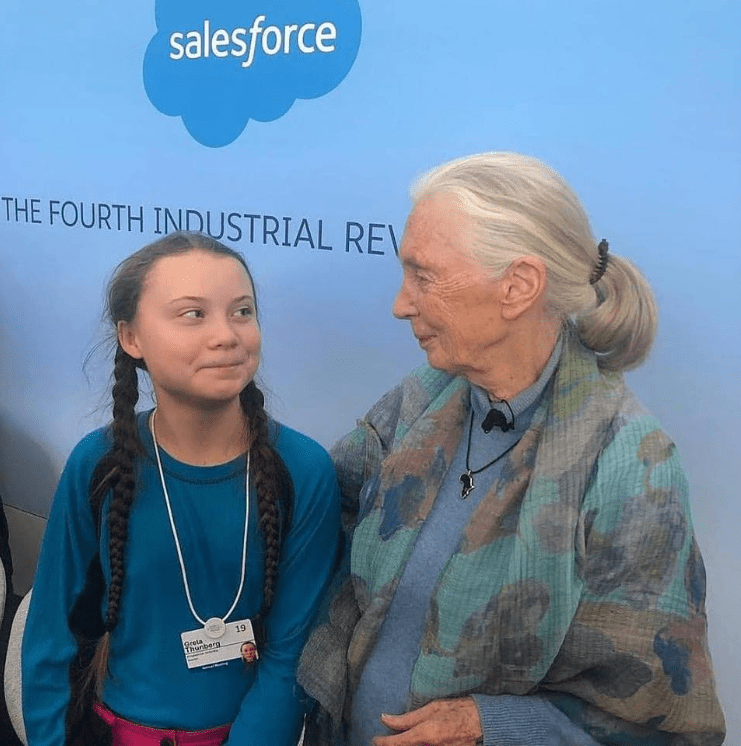
Naomi Klein and the Climate of Hypocrisy
Originally Published in Acorn #65
Naomi Klein is still remembered by many as an influential figure in the anti-globalisation/anti-capitalism movement which shook the Western world 20 years ago.
Books like No Logo and, later, The Shock Doctrine, opened many people’s eyes for the first time to the manipulative ways of the global neoliberal system.
It is only to be expected, therefore, that there are parts of her latest book, How To Change Everything, (1) with which we are in agreement.
For example, we would very much echo her description of “disaster capitalism” as being “when the rich and powerful take advantage of painful shocks to widen existing inequalities instead of correcting them”. (2)

Klein adds: “The rich and powerful see these tragedies as chances to seize control and change things in ways that favor banks, industry, and powerful politicians, not ordinary people. Disasters are opportunities for change because they disrupt normal life. In a state of emergency, ordinary laws and practices may be suspended. People feel desperate and confused. They may be so concerned with survival or recovery that they cannot focus on the large questions of what is being done, and who is benefiting”. (3)
Likewise, we are completely on board with her warnings against greenwashing, (4) “the environmental movement’s drift toward business-oriented solutions” (5) and “the powerful influence of pro-business ideas”. (6)
The book commendably traces “the scars of industrial progress” (7) back to the mechanistic philosophies propounded by the likes of John Locke, René Descartes and Francis Bacon, (8) with his vision of the Earth as “an unliving machine whose mysteries could be mastered and plundered by the human mind”. (9)
Klein even quotes orgrad inspiration Henry David Thoreau when he declared: “The Earth I tread on is not a dead, inert mass. It is a body, has a spirit, is organic….” (10)
But, sadly, the work as a whole leaves a saccharine after-taste of inauthenticity in the mouth of the discerning reader.
Part of the problem, of course, is that the book is aimed at teenagers and is subtitled ‘The Young Human’s Guide to Protecting the Planet and Each Other‘.

Klein wrote it “with” Rebecca Stefoff (pictured), a professional scribe who specialises in targeting that particular age group, and who, on her own site, actually refers to the work as “my newest book”!
Regardless of who was ultimately the actual author, the simplified language and explanations give the book the rather sinister feel of being nothing but carefully-crafted propaganda aimed at influencing a particular generation in a certain, very specific, way.
There is, of course, much promotion of the Greta Thunberg brand, with the mythologised version of her story (now entirely debunked by Cory Morningstar and others) wheeled out with a facile zeal which allows the authors to describe the Swedish youngster’s autism as “Greta’s Superpower”. (11)
“Public protest can be a powerful way to make a statement, but protest doesn’t always make things happen overnight. At first people ignored Greta as she sat with her sign. Gradually, though, her protest got a bit of attention in the news”, says their storytelling. (12)
“A movement can start out as small as a single Swedish schoolgirl sitting on a step, holding a sign that warns of climate change, then grow to cover the world”. (13)
Ah yes, of course. That’s how the world works, children. Now go back to sleep.

The book even celebrates the fact that “in December 2019, Time magazine named Greta Thunberg its youngest-ever Person of the Year for her activism in calling attention to the climate crisis” (14) without feeling it necessary to mention that Time is owned by Marc Benioff of Salesforce, a leading associate of Klaus Schwab’s WEF and enthusiast for the Fourth Industrial Revolution and Great Reset.
There are times when one has the impression of reading not so much a book as a glossy advertising brochure for the “renewable energy” industry, aka climate capitalism.
There is lots of talk about wind turbines and solar panels, the latter being hailed as “the best hope for survival”, (15) “a step toward green, renewable energy—and environmental justice”. (16)
Klein and Stefoff rightly declare, of fossil fuels: “Depending on fossil fuels to power our lives means sacrificing people and places. To extract these fuels, people’s healthy lungs and bodies must be sacrificed to the bad air and the dangerous work of coal mining. People’s lands and water are also sacrificed to damage from mining, drilling, and oil spills”. (17)
But there is strangely no mention of the extraction, destruction and pollution involved in the manufacture, transportation and disposal of solar panels, pieces of industrial equipment which seem to have been turned into organic and “renewable” offshoots of Nature herself by the briefest wave of the magical greenwashing wand.
Sick bags all round for the passage where someone called Henry Red Cloud justifies covering what was once a traditional Native village with solar panels by insisting that “solar power was always part of Natives’ lives…. It ties in with our culture, our ceremony, our language, our songs” (18) and describes those installing this industrial hardware as “solar warriors”! (19)

The authors are, in fact, quite shameless in promoting an explicitly hi-tech industrial future, while dressing up their rhetoric with talk of Thoreau and nature and age-old Native culture.
Anyone battling to protect the English countryside from the HS2 high-speed railway line project might be interested to know that Klein and Stefoff think the answer to environmental problems is to “build networks of fast electric trains”. (20)
Mooted “solutions” for the environmental crisis (questioned but not entirely dismissed) also include industrial “carbon capture and storage” (21) and geoengineering schemes such as “placing mirrors in orbit to keep sunlight from reaching the Earth, sending chemicals into the atmosphere to create artificial clouds, and building giant filters to pull greenhouse gases out of the air”. (22)
They could only hope to get away with the notion of “vehicles that do not emit greenhouse gases” (23) in a book aimed at the young, since anyone not born yesterday has understood that electric cars merely displace pollution to the site of power generation.

There is much talk of the “tools” with which the planet will be saved, which seems to be a rather coy way of referring not just to the continuing advance of the very industrial system which caused the mess in the first place, but to its progression into a new digital phase.
Henry Red Cloud’s tribal ancestors no doubt had a pretty good idea of where the sun passed through the sky in different seasons, but today he feels the need for “a tool called a Solar Pathfinder to find where the sun would hit each side of the house every day of the year”. (24)
“We already have the knowledge, tools, and technologies we need to do amazing things”, enthuse the authors. (25)
“Data and tools” are the key, they repeat: “The data is mountains of information. Over many years, measurements have been made of temperatures, wind speeds and directions, rainfall amounts, levels of salt in the oceans, sizes of glaciers, and much more. The tools are computer programs called models that are designed to mimic our planet’s complex climate system”. (26)

Sometimes we are left to read between the lines, as the detail is so sketchy (the kids aren’t interested in boring old facts, right?).
Does “investing in more efficient power grids and working to make electricity affordable and clean” (27) point to the smart metering being advanced as part of the Fourth Industrial Revolution?
Would “upgrading existing buildings, and constructing new ones to make efficient use of energy and water” (28) be leading us into the smart cities which are planned to be our techno-prisons under the new global order?
Not once in this book, for all the eco-rhetoric, is there any questioning of the actual need for “high-speed trains” (29) and “factories” (30) and “data”. (31) Indeed, the authors go out of their way to insist that they want to see a society which is “modern and wealthy”. (32)
Their work is, in fact, compelling evidence of “the powerful influence of pro-business ideas” (33) of which they themselves complain!
They do not want to challenge the industrial capitalist system at all, in fact, but rather to develop it yet further, into “smart” Fourth Industrial Revolution mode.
If Klein and her accomplices were really interested in protecting nature and traditional ways of life, then they would not be promoting the “tools” of the next phase of industrial repression and destruction.
Instead, they are using the very real environmental crisis, and people’s very real concerns about it, in order to garner support for a political manoeuvre motivated by the potential for financial gain.
The fake green youth “movement” they are trying to build is intended to push the agenda of “A Green New Deal”, (34) which is nothing but a massive hand-out of public money to those astute businessfolk and financiers who have invested in the deceitful “renewables” bubble.
Klein and Stefoff write: “Movements will make, or break, the Green New Deal. Any presidents or governments that try to make a Green New Deal a reality will need powerful social movements backing them up, demanding change, and resisting efforts to hang on to harmful old ways. These movements will need to go beyond just supporting leaders and governments that steer their countries toward change—they will have to push those leaders and governments to do more”. (35)
When climate capitalists talk about the need for government to “do more”, what they really mean is that they want governments to shove more of our money in their direction.
One of the big plus points about the Covid spectacle, for Klein and Stefoff, has been the way in which “governments found funds to pump into their countries’ economies”. (36)
They see the same logic apply to their pet climate cause and declare, in language chillingly reminiscent of Klaus Schwab’s Great Reset pitch: “This dangerous moment in time also brings an extraordinary opportunity”. (37)

A big inspiration for them was the USA’s Marshall Plan, which enabled the financially and structurally ruined nations of western Europe to “build back better” after the Second World War and also constituted a massive advance for the profitability and domination of US socio-economic-military power.
They are quite blatant about this, in fact: “The Marshall Plan did much to put European factories, businesses, schools, and social programs back on their feet. And, as Marshall had predicted, by lifting up the stricken nations of Europe, the United States helped itself, too. It forged stronger trade and political ties to those nations, which were ready to engage in international commerce much sooner than they would have been without the Marshall Plan. Today, with the climate crisis upon us, some people have called for a global or green Marshall Plan for the world”. (38)
And they add: “Would programs like these be expensive? Yes, but the New Deal and the Marshall Plan proved that governments can find resources when they have to. More recently, the US government spent enormous sums bailing out bankrupt financial institutions and buoying up the economy after a financial crisis and recession in 2008–2009 and again amid the COVID-19 economic downturn. The money is there—if the need is clear and people demand it And the need for climate action is clear. People and movements across the United States and around the world are calling for their governments to meet the climate crisis with sweeping programs of changes”. (39)
So there we have it. “Sweeping programs of change” involving enormous amounts of money directed to helping “international commerce”. This is the same “disaster capitalism” which the authors decried earlier in the book, the moment “when the rich and powerful take advantage of painful shocks to widen existing inequalities instead of correcting them”. (40)
It is telling that at a time when people are increasingly clued up about the Great Reset, Klein was wheeled out on the once-interesting The Intercept site to declare that any such insight was “a viral conspiracy theory” which “blends together legitimate critiques with truly dangerous anti-vaccination fantasies and outright coronavirus denialism”.
In 2021, Naomi Klein is no longer warning us about the global ruling class’s “Shock Doctrine” but, cynically and hypocritically, helping to advance it.

NOTES
1. Naomi Klein with Rebecca Stefoff, How To Change Everything: The Young Human’s Guide to Protecting the Planet and Each Other, Athenium Books for Young Readers, 2021, e-book. All references (as e-book % position) are to this work.
2. 22%
3. 22%
4. 46%
5. 42%
6. 50%
7. 39%
8. 35%
9. 40%
10. 40%
11. 7%
12. 7%
13. 80%
14. 7%
15. 68%
16. 26%
17. 27%
18. 25%
19. 26%
20. 17%
21. 61%
22. 64%
23. 77%
24. 25%
25. 13%
26. 13%
27. 77%
28. 77%
29. 77%
30. 75%
31. 13%
32. 88%
33. 50%
34. 72%
35. 80%
36. 92%
37. 89%
38. 75%
39. 75-76%
40. 22%